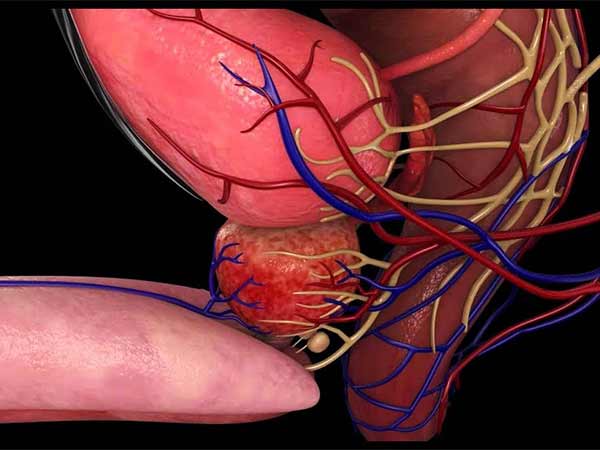Analysis shows influential US prostate study not representative of real-world patients
 An analysis of 3 US cancer databases has shown that a major US study comparing surgery with observation in early prostate cancer patients, the PIVOT study, used patients which didn’t properly reflect the average US patient. Researchers found that patients in the PIVOT trial were between 3 and 8 times more likely to die than real-world patients. This may call into question the conclusions of the study, which are now being implemented in the US and worldwide. It was presented at the European Association of Urology congress (EAU18) in Copenhagen on 17 March, following publication as a letter in the peer-reviewed journal, European Urology.
An analysis of 3 US cancer databases has shown that a major US study comparing surgery with observation in early prostate cancer patients, the PIVOT study, used patients which didn’t properly reflect the average US patient. Researchers found that patients in the PIVOT trial were between 3 and 8 times more likely to die than real-world patients. This may call into question the conclusions of the study, which are now being implemented in the US and worldwide. It was presented at the European Association of Urology congress (EAU18) in Copenhagen on 17 March, following publication as a letter in the peer-reviewed journal, European Urology.
The PIVOT study was a near 20-year study of 731 men with low-, intermediate-, and high-risk prostate cancer. The study was reported in a paper in the NEJM in 20173, with the most important finding being that there was almost no difference in the overall mortality between patients undergoing surgery and those who opted for observation (although those treated reported more side-effects).
Presenting in Copenhagen, Dr Firas Abdollah (Detroit) said “The direct clinical implication of the PIVOT study is that we should abandon surgery in virtually all prostate cancer patients, and limit our management to observation. However, in most experts’ opinion, this would result in a significant increase in the number of men with metastatic prostate cancer, and in those who will succumb to the disease.”
The PIVOT study took data from patients from men with localized prostate cancer (median PSA value, 7.8 ng per millilitre) who were then randomized to radical prostatectomy or observation at Department of Veterans Affairs and National Cancer Institute medical centre.
A new appraisal of the PIVOT study carried out by scientists at the Henry Ford Hospital, Detroit, compared the characteristics of the patients used in the PIVOT study with 3 large US databases, to see if the PIVOT database really reflected ‘real-world’ prostate cancer patients. They compared PIVOT with:
60,089 men from the Surveillance, Epidemiology, and End Results (SEER; population-based registry) between 2000-2004
63,303 men from the National Cancer Database (NCDB; hospital-based registry) from 2004-2005
2,847 men diagnosed with prostate cancer in the PLCO trial between 1993 and 2001
They found that
The men in the PIVOT study were older and sicker than would be found in a normal population, which might have biased the results of the trial. Indeed, overall mortality in the PIVOT study was 64% over 12.7 years, whereas in the other databases it was between 8 and 23% over a similar timescale (7.5-12.3 years).
In addition, the men in the PIVOT trial had a mean age of 67 at diagnosis, compared with 65.8 (PLCO), 61.3 (SEER) and 60.2 (NCDB).
Lead author Dr Firas Abdollah said:
“Our work shows that the PIVOT trial used a sample of patients who were not representative of the real population affected by prostate cancer. They were both older and sicker than we would have expected. We don’t have the data to say what comparing like for like would give us, although I think everyone would be surprised if it didn’t tip the survival data more towards surgical intervention. What this really means is that we need to wait until a definitive study can show the relative benefits of intervention versus observation.”
Commenting, Professor Hein Van Poppel (Leuven, Belgium), EAU Adjunct Secretary-general said:
“It was clear from the first PIVOT analysis in 2012, that surgery (radical prostatectomy) had an advantage over waiting in patients with a poor prognosis. Now this evaluation of the dataset used in PIVOT suggests that the balance needs to change even in early-stage prostate cancer patients. This raises significant questions over just how relevant PIVOT is to real prostate cancer patients, and we need to seriously re-evaluate the PIVOT study, before taking implementation any further.”
Source: European Association of Urology
Full bibliographic information:
The 33rd European Association of Urology




